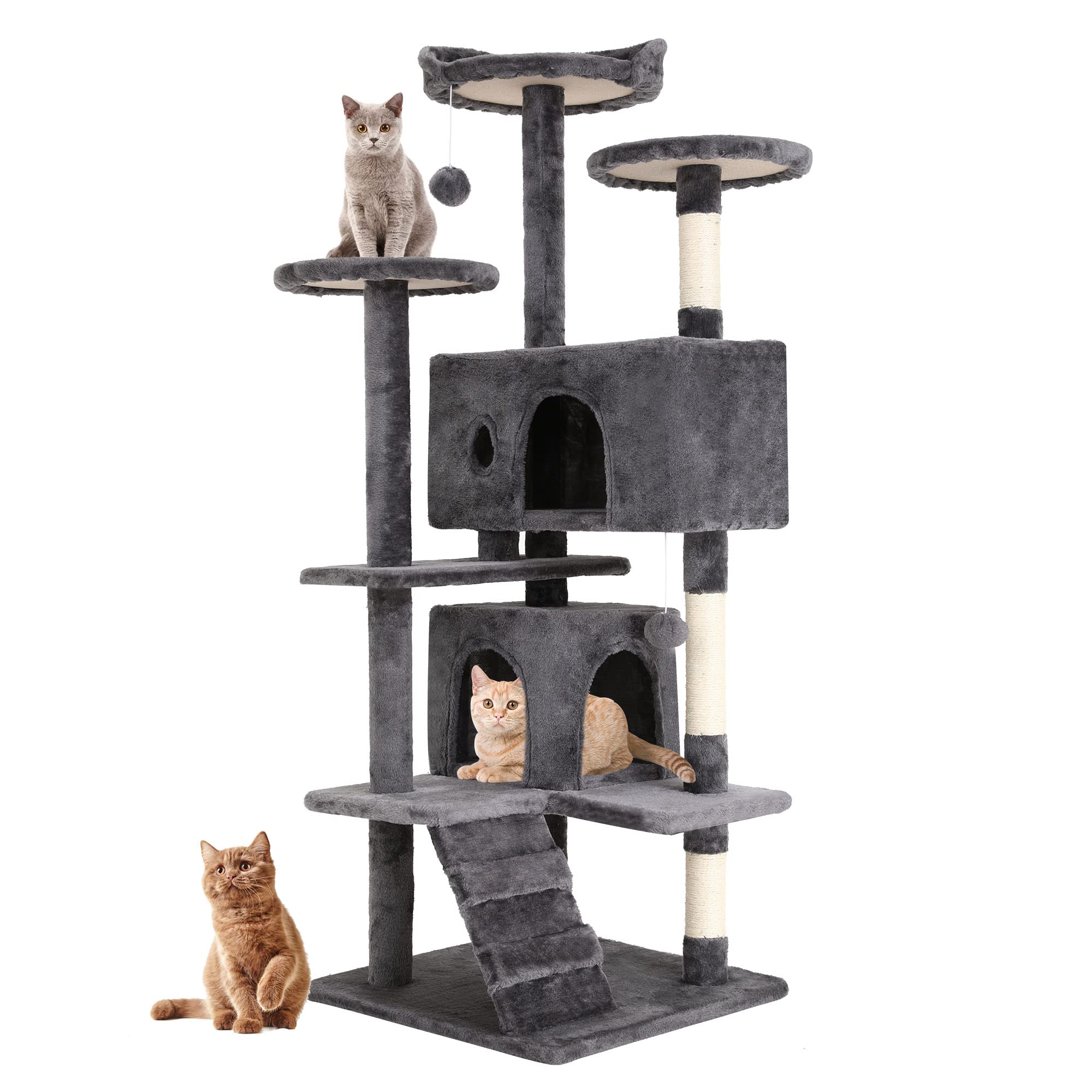Understanding and Reducing Stress in Cats
Stress is a significant yet often overlooked health issue for domestic cats. According to studies,
up to 40-50% of cats suffer from anxiety or stress at some point
. Despite these high rates, these issues frequently go undetected and untreated due to cats’ tendency to hide symptoms. However, stress takes an immense toll on feline wellbeing and quality of life. By recognizing signs of anxiety early, pet owners can take steps to minimize triggers and create a more relaxing environment for their cats.
Why Managing Stress is Crucial for Cat Health
Stress leads to elevated cortisol levels,
increased blood pressure
, and
suppressed immune system
functioning. This leaves cats vulnerable to numerous medical conditions including:
- Digestive issues
- Skin problems
- Urinary tract infections
- Kidney disease
- Diabetes
Stressed cats also tend to
overeat
, contributing to
obesity
which further compounds health risks.
Beyond physical impacts, anxiety also takes an immense emotional toll. Stressed cats exhibit
apathetic, wary, irritable, aggressive, antisocial
behavior. They withdraw from normal activities like play, exercise, and socialization. This deterioration in quality of life warrants immediate attention.
Catching Subtle Signs of Stress Early On
Noticing subtle shifts in behavior, grooming, activity levels, vocalization etc. allows owners to pick up on anxiety before it escalates. Common early warning signs include:
- Excessive sleeping
- Avoiding interactions
- Changes in appetite
- Excessive vocalization like meowing or yowling
Catching stress in initial phases maximizes the chance to pinpoint causes and reverse this state before it progresses to extreme distress, self-harm, aggression, or illness.
How to Promote Relaxation and Ease Anxiety
Pet owners play a crucial role in minimizing stress triggers and empowering cats with greater comfort, choice, and control throughout daily life. Key areas to address include:
- Preventing disruptive environmental changes
- Providing spaces and routines that prioritize calmness
- Leveraging supplements and pheromones boost relaxation
- Enriching the habitat to meet behavioral needs
By proactively tuning the household ambiance to be as soothing as possible for cats, owners can substantially curb stress and enhance wellness.
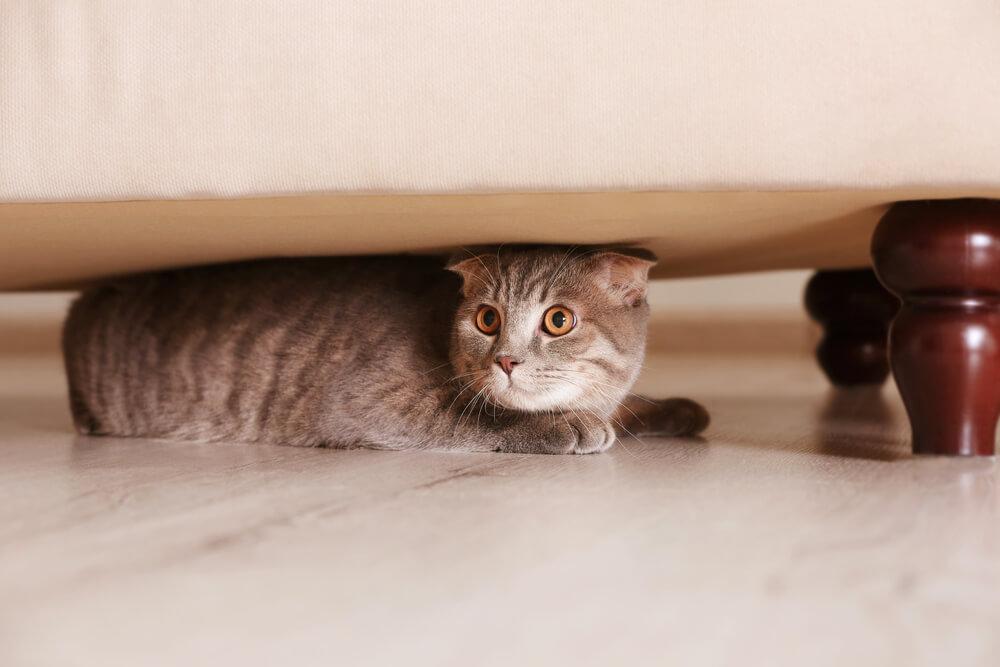
What Does Stress Look Like in Cats?
Cats exhibit both behavioral and physical symptoms when they are stressed. Being aware of these signs is crucial for identifying anxiety issues early and addressing the underlying causes.
Behavioral Indicators of Stress
Some of the most common behavioral indicators of stress in cats include:
- Aggression like biting, scratching, or acting out
- Excessive grooming beyond regular cleaning
- Hiding or withdrawing from human contact
- Refusing food or treats
- Spraying urine around the home
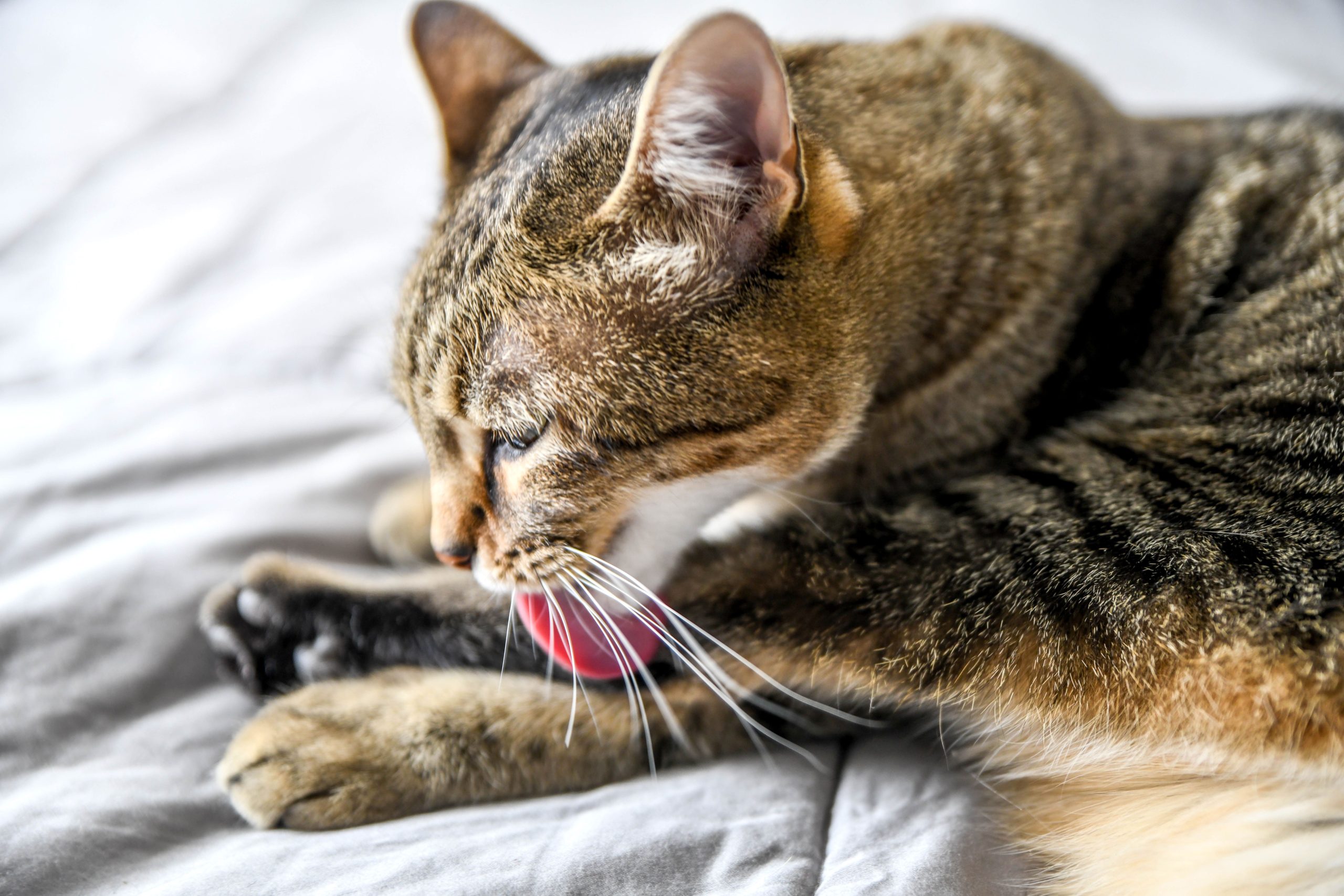
These behaviors signify that the cat is not comfortable in its current environment or situation. While a single symptom on its own doesn’t necessarily mean a cat is stressed, multiple symptoms or a sudden change in behavior warrants a closer look.
Physical Effects of Stress
In addition to behavioral signs, stress manifests physically in cats through:
- Dilated pupils, even in bright environments
- Excessive hair loss or over grooming
- Increased shedding and loss of hair
- Skin issues like irritation, wounds, or hot spots
- Unintended weight loss or weight gain
These visible effects show that anxiety is taking an immense toll on the body. Urine spraying, aggression, hiding, and refusing food make it hard for a cat to thrive. Medical intervention may eventually become necessary if the physical symptoms persist or worsen.
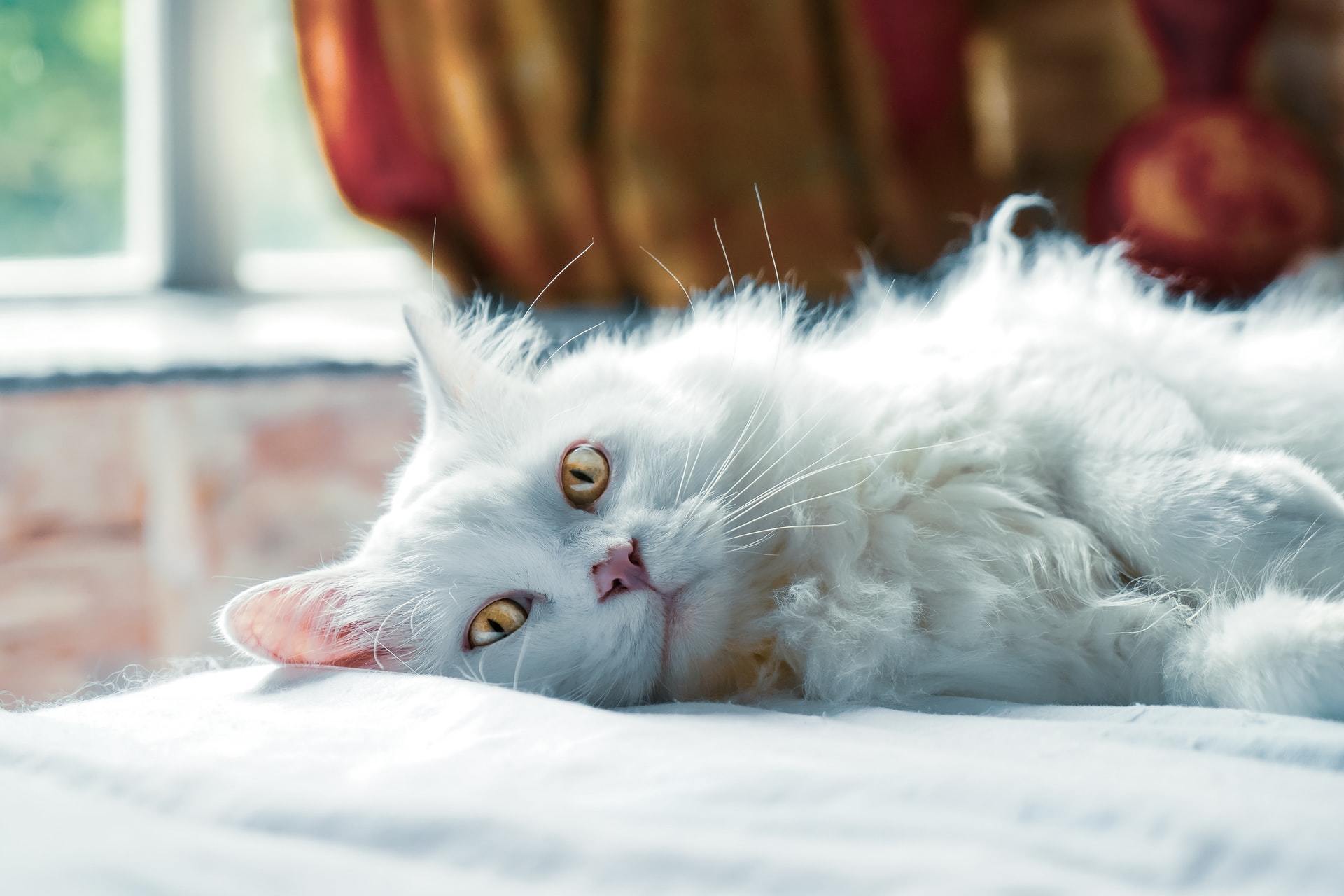
Catching the signs of stress early allows cat owners to identify the root cause and improve their pet’s wellbeing. But first, it is essential to understand where this anxiety originates.
Common Sources of Stress for Cats
Cats are notoriously sensitive creatures of habit. Any disruption to their routine or environment has the potential to cause immense distress. Below are some of the most prevalent triggers underlying feline stress:
Changes Around the Home
Cats despise sudden change and upheaval in their surroundings, including:
- Moving to a new house
- Introduction of new people or pets
- Loud noises from construction, traffic, music, etc.
- Dirty or cluttered litter boxes
- Lack of safe spaces or hiding places
Even subtle shifts like rearranging furniture or household objects can be incredibly jarring. Cats feel safest and most relaxed when their environment remains stable and predictable.
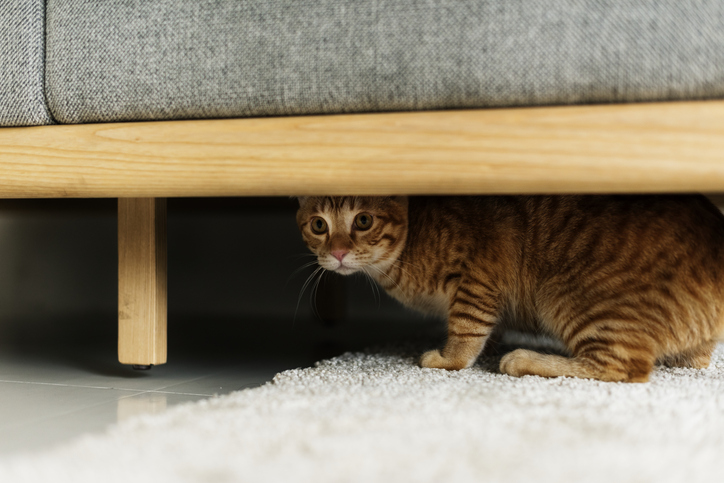
Health Problems
Various health issues inflict discomfort, pain, or distress on cats, like:
- Illness, infection, chronic pain
- Food allergies or intolerances
- Age-related decline in senses, mobility, or cognition
- Past trauma or injuries
Any condition inhibiting a cat’s ability to comfortably perform natural behaviors like grooming, playing, jumping, etc. takes a major toll.Medical investigation helps determine appropriate treatment when health problems underlie anxiety.
In multi-cat households, bullying between pets can also trigger extreme stress. Ensuring each cat has its own dedicated resources minimizes tense competition.
Strategies for Reducing Cat Stress
The good news is that cat stress can be successfully lowered and managed once the underlying reasons are uncovered. Creating an environment tailored to feline needs provides comfort and control that keeps stress at bay.
Establish a Calm Home Environment
The most basic way to ease anxiety is allowing cats to settle into a predictable, low-stimulation habitat:
- Maintain consistent daily routines for feeding, play, etc.
- Frequently scoop litter boxes and use feline-preferred litter
- Provide cat trees, tunnels, and hiding places
- Give affection and physical contact on their terms
- Provide daily interactive play sessions with toys like wands and puzzles
Essentially “catifying” the home attunes the ambiance to be welcoming rather than overwhelming. This restored sense empowerment alleviates distress.
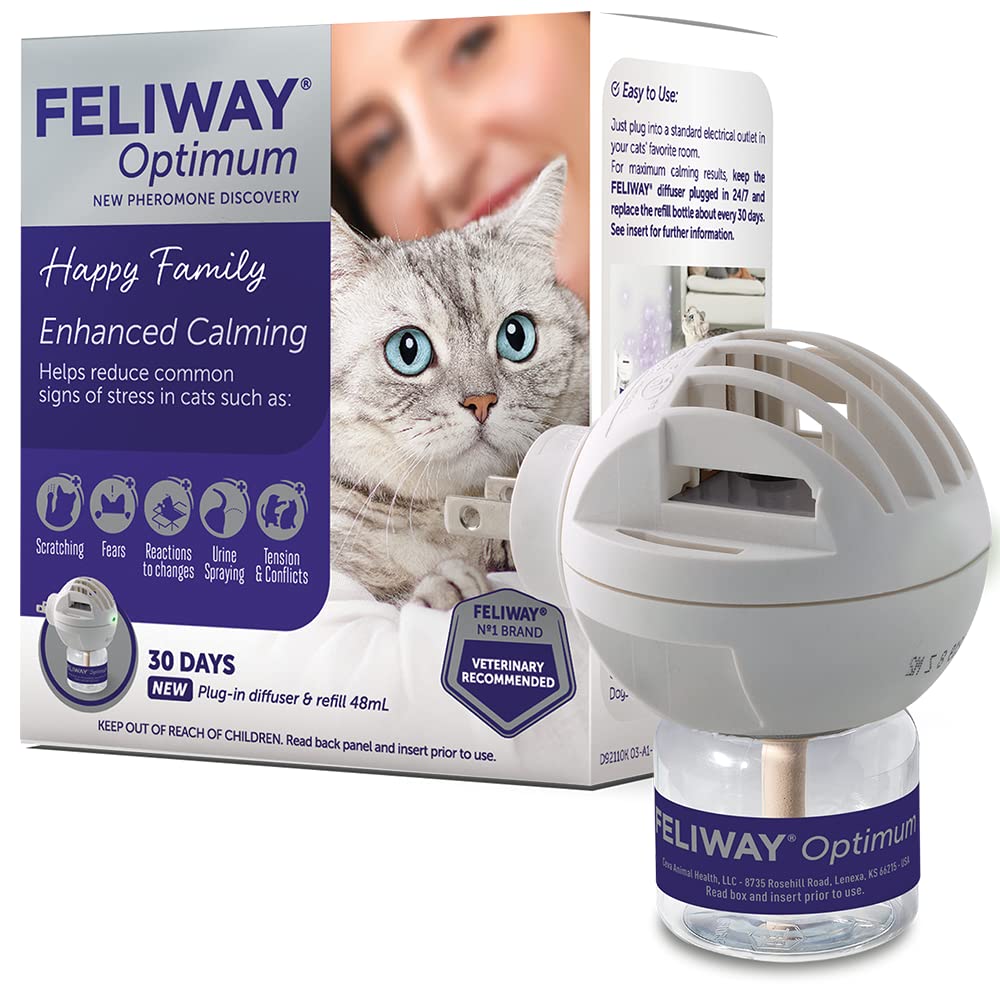
Leverage Pheromones and Supplements
Special synthetic feline pheromones and calming oral products help take the edge off:
- Feliway brand diffusers emit appeasing pheromones into the air
- Treats like Composure contain L-theanine for relaxation
- Anti-anxiety nutritional supplements with ingredients like tryptophan
These solutions influence behavior, emotional state, and brain chemistry to promote tranquility. Rotate through various calming aids to determine what best comforts each individual.
If adjusting the home environment and using special calming products does not adequately relieve stress, then it’s essential to seek professional support.
Getting Veterinary Help for Cat Anxiety
While adjusting aspects of the home environment and routine are the first line of defense, consulting a vet becomes essential if symptoms of stress persist or endanger the cat’s health.
Clear Signs Professional Support is Needed
Pet owners should promptly seek veterinary assistance when they notice:
- Deteriorating physical condition – unhealthy coat, wounds from overgrooming, weight fluctuations
- Withdrawal from normal activities – no interest in play, interactions, etc.
- Inability to comfortably perform bodily functions – struggles using litter box, disrupted sleep, loss of appetite
- Self-harming behaviors – excessive grooming to the point of skin damage, stress scratching
If non-medical interventions like pheromones, routine adjustments, habitat enrichment etc. still fail to provide adequate relief, pharmaceutical support assists in restoring neurological balance.
Common Medications Vets Prescribe
Veterinarians have an arsenal of anxiety medications at their disposal to help overwhelmed cats regain a sense of stability. These include:
- SSRIs like fluoxetine that regulate serotonin levels
- Tricyclic antidepressants such as clomipramine
- Anti-anxiety medication like gabapentin
- Temporary sedatives for high-stress events like travel
These drugs tackle anxiety’s physiological underpinnings rather than just masking symptoms. They may be prescribed on a short-term or long-term basis depending on the cat’s needs.
Integrative Approach Combines Medical and Lifestyle Solutions
Veterinarians work with cat owners to orchestrate a personalized regimen that draws from both pharmaceutical and non-pharmaceutical interventions for the best results. Medical anxiety treatment coupled with environmental enrichment and calming modalities helps cats regain a sense of control over their stress levels. By working closely with professionals, cat caregivers give their pets the best chance of overcoming anxiety challenges. Ongoing attention ensures optimized wellness for years to come.
The Takeaway: Prioritize Cat Comfort and Calm
While cats excel at masking signs of distress, pet owners must make concerted efforts to decode subtle behavioral and physical manifestations of stress. By understanding common root causes, caregivers can transform household environments to be more intuitive havens for sensitive felines.
Tune Into Changes Signaling Discomfort
Monitor cats closely for small changes potentially reflecting anxiety:
- Alarmed body language – ears back, jumping at noises
- Altered grooming and shedding
- Wariness towards humans or other pets
- Shift in sleep patterns or vocalization
Keen observation skills help catch stress early before it escalates into more hazardous territory.
Strategically Modify the Home to Prioritize Calmness
The central theme across stress relief strategies is providing constancy, predictability, and control. Core elements include:
- Minimize disruptive events like moving homes or introductions to new pets
- Catify the environment with enrichment toys and vertical territory
- Establish set routines for feeding, playtime, etc.
- Keep litter boxes extremely clean and appealing
- Provide hiding spots and escape routes from commotion
Conscientious planning prevents circumstances known to overload cats. Customizing their habitat to align with behavioral preferences grants confidence and autonomy.
Address Underlying Issues and Discomforts Proactively
In addition to adjusting external circumstances, cat caregivers must tackle interpersonal stress drivers related to:
- Medical conditions causing pain or restricting activity
- Allergies and food intolerances
- Age-induced decline in mobility or senses
- Disputes and resource guarding between pets
Pinpointing and promptly treating factors diminishing quality of life is paramount. This well-rounded game plan restores comfort and stability to maximize wellbeing.
